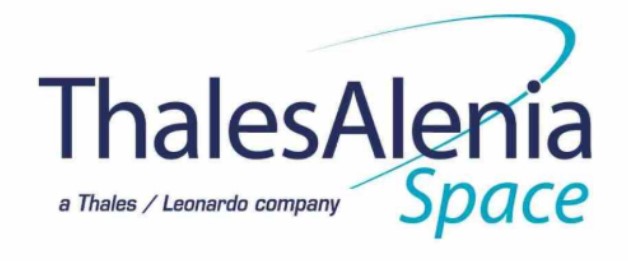-
StatusCompleted
-
Status date2017-01-16
-
Activity Code5C.171
The objective of this activity is the design, manufacture and test of a 4x4 breadboard demonstrator of an advanced concept of Ka-band switch matrix scalable to very high order switch matrices (32 inputs x 32 outputs and higher)
The end goal is to prove the feasibility of an advanced highly integrated, low mass and cost efficient high order scalable solid state switch matrices for use in future Ka-band multibeam payloads for application as both low level redundancy rings and/or for implementation of flexible on board channel to beam connectivity.
The proposed solid state switch matrix concept shall represent a significant improvement with respect to current state of the art in terms of feasible maximum switch matrix order, RF performance, scalability, integration and cost points of view.
The main challenge addressed by the project is the development of the 4x4 building block at Ka-band on a single LTCC board, with about:
- 20 MMICs, each one in one single cavity;
- 4 planar power dividers;
- 8 resistive pads, for gain equalization;
- 16 crossing paths for signals routing;
In addition to the physical placement, the main issue is to guarantee proper isolation at Ka-band between all components and, so, between the Outputs. To this aim, extensive EM simulations and technological optimization are required.
The proposed solid state switch matrix concept shall represent a significant improvement with respect to current state of the art in terms of feasible maximum switch matrix order, RF performance, scalability, integration and cost points of view.
Current state-of-the-art of solid state RF switch matrices, using splitting and combining networks or multiple throw switch trees in combination with GaAs switches allow flexibility in connecting ports and can enable broadcast modes. But they are limited both in frequency (up to Ku-band) and on maximum switch matrix order in terms of number of inputs and outputs with acceptable RF isolation performance.
With the evolution of Ka-band multibeam payloads to higher on board capacities, higher number of user beams and ever higher number of RF equipment units, there is a need for a compact and cost efficient Ka- band switch matrix concept able to work for both on board flexible connectivity of channels to beams and also for implementation of on board Ka- band equipment redundancy rings at lower costs than current standard redundancy rings based on mechanical switches.
A fundamental characteristic of the proposed solution is that the whole 4x4 matrix is physically realized as a single LTCC board having a size of about 8x8 cm. The possibility to route and to cross the connection paths by using up to 14 inner layers of the LTCC improves either the Isolation among the connections paths or their RF radiation that may increase the losses and generate undesired couplings, which, in turns, would impact the Isolation as well. Useful features of the LTCC technology developed in TASI, such as losses compensation over the routes and Via fences for signal isolation, allow to optimized the main electrical performances, such as Gain and Isolation between different channels.
Two custom MMICs are developed to physically switch signals trough the different channels. A reflective SP4T ensures that just one Input can be routed to one Out. At the Input section, the standard SP4T is replaced by a “re-configurable” SPDT capable to route the Input signals from 1 up to 4 Output at the same time. This feature, Point-to-Multipoint, gives to the switch matrix user the possibility to manage variation in the traffic, in case there is the need to allocate more resources (active transponders) onto one particular beam.
SYSTEM ARCHTIECTURE
The baseline architecture is based on the Clos network making use of 4x4 blocks, made again by using a Clos blocks, where each Input can be connected to all Outputs satisfying the Non-Blocking requirement and allowing, at the same time, the Point-to-Multipoint configuration (Figure 1).

A proper packaging of the Building Blocks allows to realize the 32x32 matrix, by a combination of 40 of them, with a very compact layout (Figure 2)

The project is developed on the basis of the following tasks:
- Task 1: Switch Matrix trade-offs and preliminary design
- Task 2 : Breadboarding of critical elements
- Task 3: Switch matrix detailed design
- Task 4: Manufacture, integration and test
- Task 5: Conclusions and way forward
Project has been completed. The 4x4 Matrix has been realized and tested as a Building Block element to be scaled for the 32x32 Matrix.




